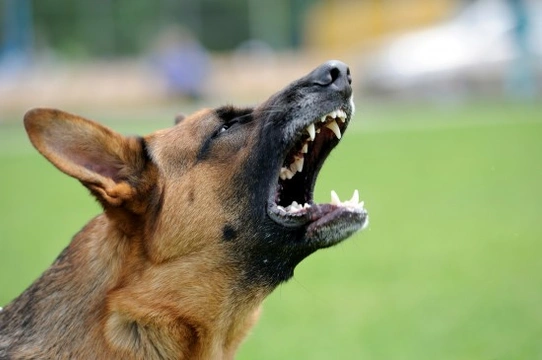
What factors may trigger an aggressive dog?
Certain breeds and types of dogs are more prone to dominance and aggression than others, but dogs of any breed or type may become too big for their boots or have a tendency to aggression due to a combination of factors, such as learned behaviours or a history of poor handling, neglect, or lack of training.
While aggression should never be accepted or forgiven as the default state for any dog and it is vital that any dog with aggression issues be subjected to a retraining and behaviour modification programme to get to the root of the issue, understanding the possible cues and triggers for aggression can help both to resolve the issue long term, and tackle the problem in the meantime.
A great many potential factors can cause an aggressive display or behaviour in a dog that is apt to act out, and learning more about the common triggering factors can help to prepare you to resolve the issue, and prevent threat displays from occurring. Read on to learn more about some of the factors that can trigger aggression in the dog.
Fear and insecurity
Fear is one of the most common triggers for aggression and all sorts of other behavioural problems too, generating a fight or flight response in the dog that will often bring out the worst in them.
If a dog feels threatened or is fearful, they will use every possible tool in their arsenal to defend and protect themselves from the perceived threat, including barking, growling, snapping and possibly biting. It is important to understand that fear aggression is not based on the necessary reality of the situation, but in your dog’s perception of it; and so, understanding what is causing your dog to react aggressively when you as a person know that no threat is present can be a challenge.
Some of the most common triggers of fear aggression include sudden movements, a person looming over the dog or impinging upon their personal space, strong eye contact, noisiness, or attempting to take away one of the dog’s resources, such as food or toys.
Territorialism
All dogs are territorial animals to some extent, and this is much more pronounced in some dogs than it is in others. What each dog perceives as their territory can vary; for some dogs it will simply comprise of their bed and food, while for others it may be the whole house, the house and garden, the general neighbourhood that they live in, or their family members.
A dog that perceives that someone or something is invading their territory may become aggressive in an attempt to defend it, and in order to address this, you will need to work out exactly what your dog considers to be their territory in the first place.
Your dog should be able to view their home and resources as something that is theirs and not at threat of being taken away from them, but if this turns into aggression, things have gone too far. In particular, dogs should not regard public spaces or their people as their territory in such a way that they seek to defend it or them, and keep other people or dogs away from it.
Competition and dog to dog dominance
When two or more dogs share a household, they will view each other as part of the pack structure of the home, which also includes every member of their human family as well.
This means that once the pecking order and pack structure has become established, a status quo is formed, which provides a boundary for acceptable behaviour between the dog and the other parties, and rules for behaviour that are not overstepped. It is vital that the dog does not view themselves as above the people in the pecking order, as this can lead to aggression and challenges when the dog perceives the people as overstepping their roles.
Dogs that live together need to have the time and space to work out their own relationships to each other, but bullying, resource stealing or aggression should not be accepted as part of this, and such problems need to be tackled promptly.
Other factors
While the three factors outlined above are the most likely triggers for aggression in dogs prone to it, they are by no means the only ones, and every dog is an individual that may react in the ways that it has learned to do, as a result of their past experiences and learned behaviours.
If a dog has been abused or mistreated, they are likely to be wary of strangers and even possibly suspicious of their owner’s behaviour on occasion, and stimulus that has previously hurt or threatened your dog may in turn lead to aggressive responses. It can be hard to pinpoint the exact reason for aggression of this type, and it can take time to get to the root of the problem, which is of course, an important part of being able to find a solution.
Canine aggression and the result of behaviours learned before you owned the dog can be complex, and you may wish to consider hiring a canine behaviourist to help you to get to the root of the problem and learn how to tackle it.



